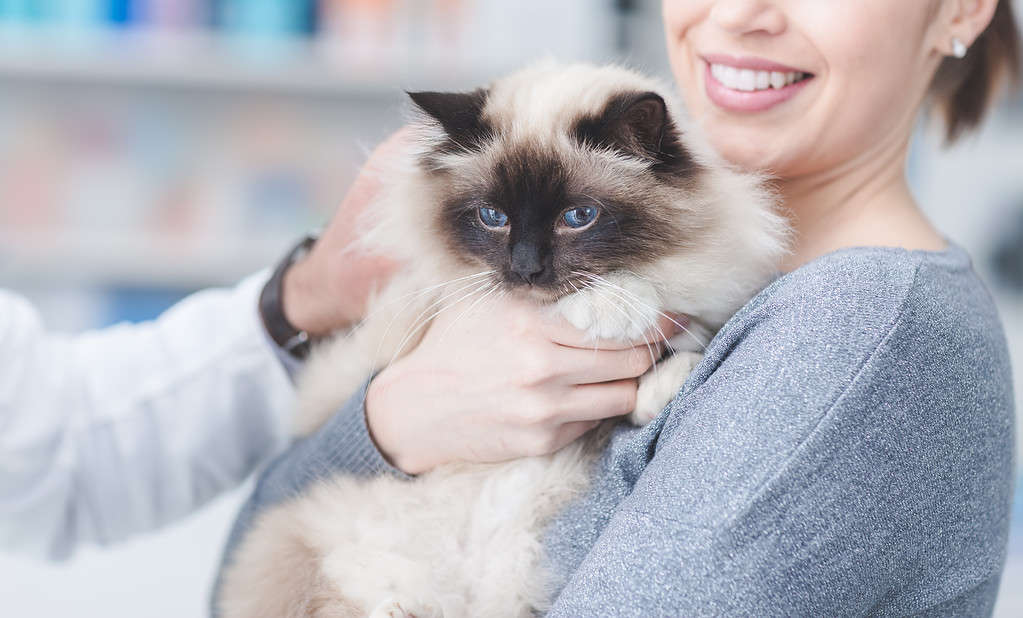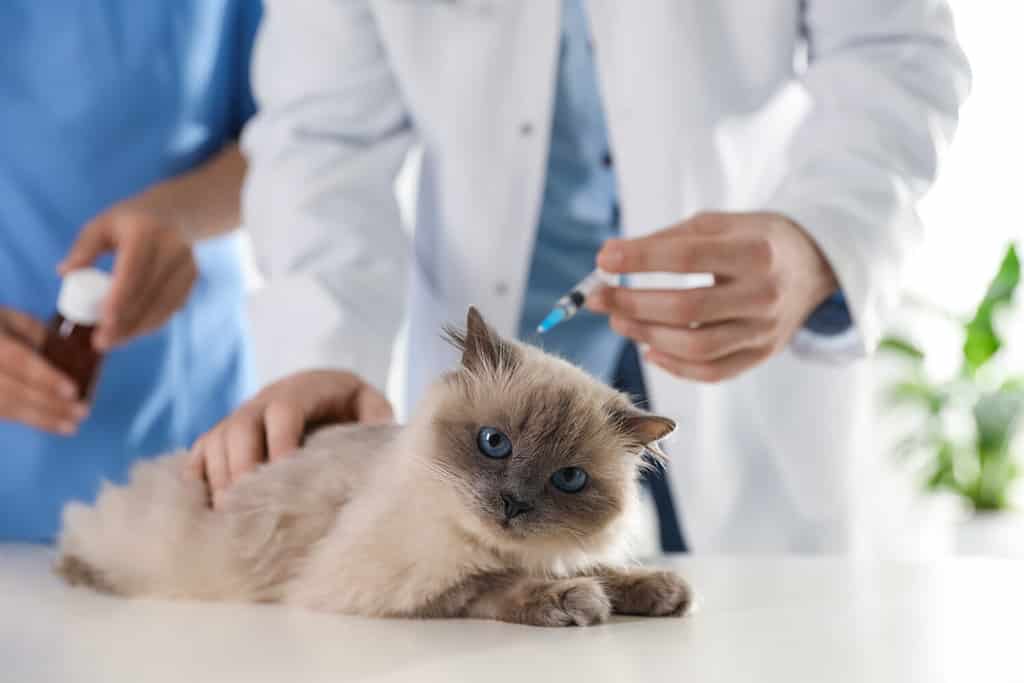Birman cats are typically considered a healthy breed. They have a long lifespan of 12 to 16 years, which is higher than most other cat breeds. However, that doesn’t mean they’re completely free from health problems. Just like any cat, Birmans can develop health problems throughout their life.
Here are some of the most common Birman cat health problems you should know:
1. Feline Hypertrophic Cardiomyopathy

Symptoms of feline hypertrophic cardiomyopathy include difficulty breathing, open-mouthed breathing, and rapid breathing.
©cyano66/iStock via Getty Images
This heart disease is one of the most common heart diseases in cats. It affects the thickening of the heart muscles. As a cat’s heart walls thicken, it can’t pump blood as effectively. The cat starts to become lethargic, fast breathing, and may even lose weight.
This condition is common across all breeds, including Birman cats. Careful breeding can go a long way to prevent it, but it isn’t foolproof. Therefore, any cat can end up with feline hypertrophic cardiomyopathy.
Luckily, this condition can be managed with medication. However, early diagnosis is important.
2. Hemophilia

Birman cats tend to be healthier than most, but it’s still important that they are taken to the vet regularly.
©New Africa/Shutterstock.com
Hemophilia is a serious clotting condition. Simply put, it causes the cat’s blood not to clot properly, leading to excessive bleeding. As you might guess, this can be potentially deadly in extreme situations.
Luckily, hemophilia is extremely rare. However, it does seem to occur in Birman cats more often than in other breeds. It’s inherited, so this would make sense.
There isn’t a cure for this condition. If you know your cat has it, early intervention when injured and special care during surgeries can help prevent complications.
3. Polycystic Kidney Disease
Again, this condition occurs across many different breeds. It’s no different for Birman cats. While it doesn’t occur in Birman cats as often as other cat breeds, they can still inherit it.
Polycystic kidney disease causes cysts to form within a cat’s kidneys. Eventually, these cysts build up, leading to kidney failure. It isn’t curable. However, genetic testing can identify carriers and prevent kittens from inheriting it. It’s important to only purchase kittens from quality breeders for this reason.
4. Hypotrichosis

Some cats with hypotrichosis may suffer hair loss and thinning fur, so they need extra skin protection.
©Borkin Vadim/Shutterstock.com
Unlike most other conditions on this list, hypotrichosis isn’t deadly. It is a genetic condition that causes hair loss and thinning. Many cats will eventually go bald. However, other cats will inherit this disease and hardly lose any hair at all.
Either way, affected cats typically live a normal lifespan and don’t seem all that bothered. Their skin is sensitive, though, so they typically need to be treated like a hairless cat. That means bathing, sunscreen, and lotion.
It requires a bit of extra care, but not nearly as serious as other health conditions.
5. Eye Problems

While all Birman kittens are adorable, it’s important to purchase from a quality breeder to prevent inherited disorders.
©Liudmila Chernetska/Shutterstock.com
Birman cats can be prone to cataracts, eyelid agenesis, and corneal sequestration. All of these conditions are common in many different cat breeds, so they aren’t unique to Birman cats. However, out of all the health conditions cats can get, eye problems are some of the most common.
Having your cat’s eyes checked by your vet regularly is important. Most of these conditions are completely curable or at least managed. However, early diagnosis is important.
6. Feline Infection Peritonitis
FIP is an infectious, viral disease that isn’t curable. It occurs most often in younger cats, but this is because it isn’t treatable. This disease has many strains, and some are more serious than others. About 90% of all strains are completely harmless, while the other 10% are deadly.
Currently, about 50 to 90% of cats will end up with some sort of FIP infection – but most of those cats won’t show symptoms. Cats from certain breeds are more prone to developing troublesome FIP, including Birman cats. Felines from similar ancestries, like Himalayans, are also at risk.
Stressed cats and felines in multi-cat households are particularly at risk for FIP. Genetic factors are thought to be involved, but we don’t know exactly how this works.
7. Common Cat Diseases

Keep an eye on your cat’s litter behaviors and take them to a vet if you suspect a urinary tract infection.
©Pawel Kacperek/iStock via Getty Images
Birman cats are also prone to other common feline illnesses, like urinary tract infections and dental disease. While these conditions are specific to the Birman breed, they are common in all cats, so you should watch out for them when you own a Birman, too.
Getting your cat regular vet care is essential to keeping them healthy. You should also watch your Birman for strange behaviors, such as inappropriate urination and excessive hiding. These may be the only signs of illness that you get, as cats are notoriously very good at hiding their illnesses.
The photo featured at the top of this post is © Wirestock/iStock via Getty Images
Thank you for reading! Have some feedback for us? Contact the AZ Animals editorial team.







